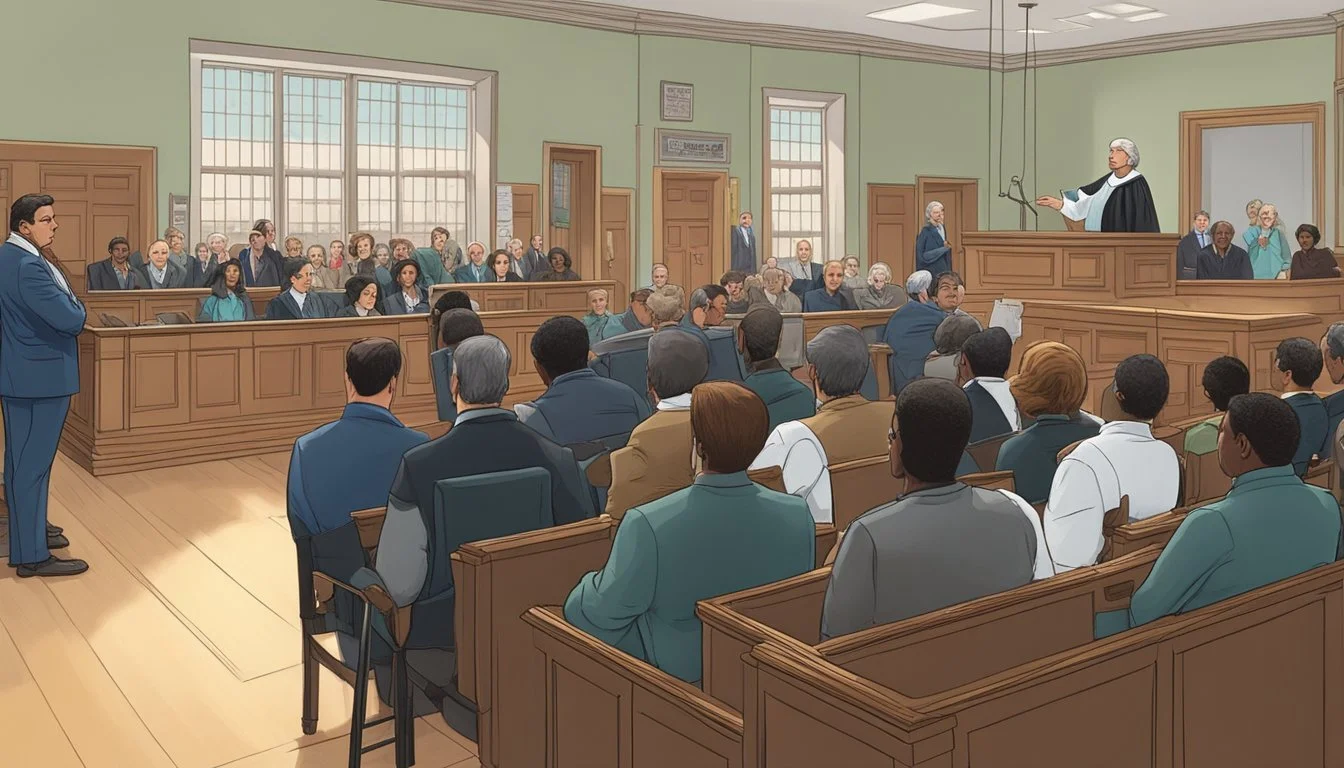Michael Swango's Medical Malpractice: Doctor Death's Life Sentence for Serial Killings in Hospitals
Michael Joseph Swango's career as a physician took a sinister turn, leaving a trail of death and devastation in his wake. Known as "Doctor Death," Swango is believed to have poisoned and killed dozens of patients under his care at various hospitals across the United States and Zimbabwe. His actions represent one of the most chilling cases of medical malpractice in history, ultimately resulting in a life sentence without the possibility of parole.
Swango's murderous spree spanned nearly two decades, as he moved from hospital to hospital despite suspicions and dismissals. He used his position as a trusted medical professional to administer lethal doses of medications to unsuspecting patients. The case exposed alarming gaps in the healthcare system's ability to identify and stop dangerous practitioners.
The story of Michael Swango serves as a stark reminder of the vital importance of thorough background checks and vigilant oversight in the medical field. His case prompted changes in how hospitals vet and monitor their staff, aiming to prevent similar tragedies in the future.
Early Life and Education
Michael Joseph Swango was born on October 21, 1954, in Tacoma, Washington. He grew up in Quincy, Illinois, where he excelled academically and showed an early interest in medicine.
Path Towards Medicine
Swango attended Quincy Catholic Boys High School, graduating as valedictorian in 1972. He enrolled at Quincy College, majoring in chemistry and biology. His academic performance earned him a full scholarship to Southern Illinois University School of Medicine.
During medical school, Swango's fascination with death became apparent. He collected newspaper clippings about gruesome accidents and disasters. Despite this unusual hobby, he maintained high grades and graduated in 1983.
Warning Signs
While in medical school, Swango's behavior raised concerns among classmates and faculty. He exhibited an obsessive interest in dying patients and spent excessive time in the hospital morgue. Some reported seeing him smile while describing terminal cases.
Swango's drinking habits also became problematic. He frequently consumed alcohol before and during hospital shifts. Despite these red flags, the medical school administration did not take significant action.
In his final year, rumors circulated about patients dying unexpectedly under Swango's care. However, no formal investigations were conducted at the time.
Timeline of Medical Malpractice
Michael Swango's career was marked by a disturbing pattern of patient deaths and poisonings spanning multiple hospitals. His actions went undetected for years as he moved between medical facilities.
First Suspicious Activities
In 1983, Swango began working as a paramedic in Illinois. Colleagues noticed patients often became ill after he brought them food or drinks. At Ohio State University Hospital in 1984, nurses observed that patients frequently died during Swango's shifts.
The death of Cynthia McGee, a 19-year-old recovering from a car accident, raised alarm. Despite suspicions, Swango completed his internship and moved on to other hospitals.
Pattern of Poisoning
Swango's modus operandi involved poisoning patients with substances like arsenic and pesticides. He often volunteered to deliver food or medication to victims.
At a psychiatric facility in 1985, he poisoned co-workers with ant killer in donuts. Five staff members fell ill but survived.
Patients under Swango's care experienced unexplained rapid declines. Many suffered from symptoms consistent with poisoning: nausea, vomiting, and cardiac issues.
Shifting from Hospital to Hospital
Swango's ability to move between medical facilities allowed his crimes to continue. After leaving Ohio, he worked in Illinois, South Dakota, and New York.
In 1993, he obtained a position at a hospital in Zimbabwe. There, nurses nicknamed him "Doctor Death" due to high patient mortality rates.
Returning to the U.S. in 1997, Swango secured a residency at a New York hospital using forged documents. This role ended when his past came to light, leading to his arrest and eventual life sentence in 2000.
Legal Challenges and Immigration Issues
Michael Swango faced numerous legal hurdles and attempted to evade justice by fleeing across borders. His case involved complex criminal proceedings and immigration issues spanning multiple countries.
Arrests and Convictions
Swango's first arrest came in 1985 for poisoning co-workers in Illinois. He served two years in prison for aggravated battery. After release, he obtained false credentials and continued working in healthcare.
In 1993, Swango was convicted of fraud in South Dakota for lying on a job application. He received a 3-year sentence but was released early.
While working at a New York hospital in 1993, suspicions arose about patient deaths. Swango fled before authorities could investigate further.
Cross-Border Flight
Swango escaped to Zimbabwe in 1994 using falsified documents. He worked at a hospital there until 1997, when suspicions again surfaced about unusual patient deaths.
Fleeing Zimbabwe, Swango attempted to enter Namibia but was denied entry. He then traveled to Europe, eventually making his way to Chicago.
At O'Hare Airport in 1997, immigration officials arrested Swango on an outstanding warrant for fraud.
Final Apprehension and Trial
After his airport arrest, Swango faced fraud charges in New York. While in custody, investigators built a stronger case linking him to patient deaths.
In 2000, federal prosecutors indicted Swango for murder. He was charged with killing three veterans at a Long Island VA hospital in 1993.
Facing overwhelming evidence and the possibility of the death penalty, Swango pleaded guilty to three counts of murder in 2000. He received three consecutive life sentences without the possibility of parole.
International Crimes
Michael Swango's criminal activities extended beyond U.S. borders. His time in Zimbabwe led to further allegations of patient deaths through poisoning.
Zimbabwe Incidents
In 1991, Swango secured a position at Mnene Lutheran Mission Hospital in Zimbabwe. During his tenure, nurses reported suspicious patient deaths. At least five patients under Swango's care died unexpectedly.
Staff members observed him injecting an unknown substance into IV bags. Suspicions grew when healthy patients suddenly became ill after Swango's rounds.
David Coltart, a Zimbabwean lawyer, investigated the deaths. He uncovered evidence suggesting Swango poisoned patients with toxic chemicals.
Global Investigation
Swango's international activities prompted a global investigation. Authorities in multiple countries examined patient deaths linked to his medical practice.
The FBI coordinated with Interpol to track Swango's movements across borders. They discovered he had applied for medical positions in various African nations.
Investigators in Bulawayo, Zimbabwe's second-largest city, exhumed bodies of suspected victims. Forensic tests revealed traces of poisons in some remains.
The international probe ultimately contributed to Swango's capture and conviction in the United States. It highlighted the need for improved background checks for medical professionals working abroad.
Impact on Medical Community
Michael Swango's crimes sent shockwaves through the medical profession, prompting significant changes in hospital practices and patient safety protocols. His case exposed vulnerabilities in existing systems and highlighted the need for more rigorous oversight.
Hospital Policies and Practices
Hospitals nationwide implemented stricter background checks and credentialing processes for medical staff. Many institutions adopted more thorough reference verification procedures, contacting previous employers directly rather than relying solely on provided references.
Improved drug monitoring systems were put in place to track controlled substances more closely. Some hospitals installed surveillance cameras in medication storage areas and implemented dual-verification protocols for drug administration.
Enhanced reporting mechanisms were established for suspicious patient deaths or illnesses. Staff were encouraged to voice concerns without fear of retaliation, fostering a culture of vigilance and accountability.
Preventive Measures
Medical schools intensified their screening processes for applicants, incorporating psychological evaluations and more in-depth interviews. Some institutions implemented ongoing behavioral assessments for medical students and residents.
Professional licensing boards strengthened their disciplinary procedures and information sharing practices. A national database was created to track disciplinary actions against physicians across state lines.
Hospitals developed comprehensive emergency response protocols for suspected poisoning cases. Staff received specialized training to recognize signs of intentional patient harm.
Patient advocacy groups pushed for increased transparency in medical error reporting and disciplinary actions against healthcare providers. Some states passed laws requiring hospitals to disclose certain adverse events to patients and families.
The Life Sentence
Michael Joseph Swango faced justice for his heinous crimes as a serial killer physician. His sentencing marked the end of a long investigation and legal process.
Legal Proceedings
Swango's trial took place in a federal court in New York in 2000. Prosecutors presented evidence of his deadly actions at Long Island Veterans Affairs Medical Center. He was charged with three murders from 1993.
The court heard testimony about Swango's pattern of poisoning patients under his care. DNA evidence and witness accounts strengthened the case against him. Swango ultimately pleaded guilty to three counts of murder.
Judge Jacob Mishler sentenced Swango to three consecutive life terms without the possibility of parole. This ensured he would never practice medicine or harm patients again.
Behind Bars
Swango began serving his life sentence in federal prison. He was initially held at ADX Florence, a supermax facility in Colorado. Authorities deemed him too dangerous for a lower-security prison.
In custody, Swango faced strict limitations on his movements and interactions. He had no access to medications or potential poisoning agents. Prison staff closely monitored his behavior and communications.
Swango's incarceration brought relief to victims' families and the medical community. It ended his decades-long ability to move between hospitals and countries, leaving a trail of suspicious deaths. His case prompted reforms in background checks for medical personnel.
In Popular Culture
Michael Swango's shocking crimes as a doctor-turned-serial killer have captured public attention. His case has been featured in various media and literary works, exploring the chilling details of his actions and their impact.
Media Representation
Swango's story has been portrayed in television documentaries and news programs. The Discovery Channel's "Dr. Death" episode in their "Deadly Doctors" series examined his case in detail. NBC's Dateline aired a segment titled "Deadly Medicine" in 2000, featuring interviews with investigators and victims' families.
A made-for-TV movie, "Nurses Killer," loosely based on Swango's crimes, aired in 2004. It dramatized the events surrounding his medical career and subsequent arrests.
Literary Accounts
James B. Stewart's book "Blind Eye: The Terrifying Story of a Doctor Who Got Away with Murder" delves into Swango's life and crimes. Published in 1999, it provides a comprehensive account of his actions and the systemic failures that allowed him to continue practicing medicine.
True crime author M. William Phelps wrote "Lethal Prescription" in 2013. The book offers a detailed examination of Swango's background, motivations, and the investigations that led to his capture.
Several medical ethics textbooks now use Swango's case as a cautionary tale. They highlight the importance of thorough background checks and vigilant oversight in healthcare settings.



